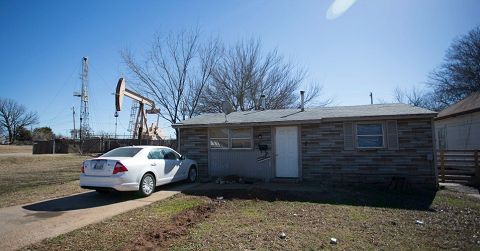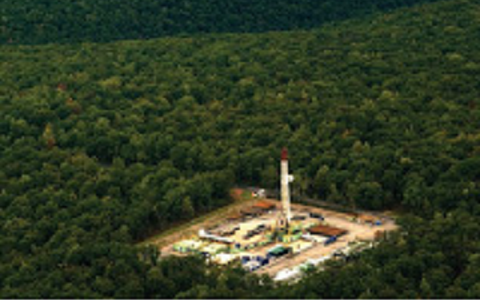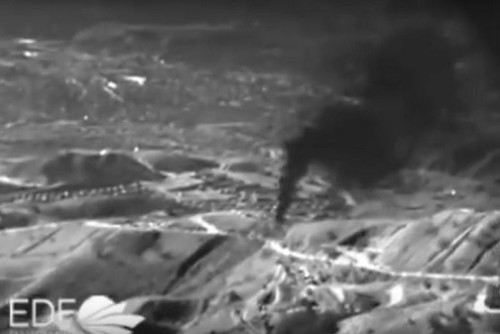
Babies Born Near Oil and Gas Wells Are Up to 70% More Likely to Have Congenital Heart Defects
July 22, 2019
PA Commonwealth Court Ignores State Supreme Court Decision
August 6, 2019By Robert W. Howarth
Department of Ecology & Evolutionary Biology, Cornell University, Ithaca, NY 14853
Abstract
Methane has been rising rapidly in the atmosphere over the past decade, contributing to global climate change. Unlike the late 20th Century when the rise in atmospheric methane was accompanied by an enrichment in the heavier carbon stable isotope (13C) of methane, methane in recent years has become more depleted in 13C. This depletion has been widely interpreted to indicate a primarily biogenic source for the increased methane. Here we show that the change may instead be associated with emissions from shale gas and shale oil development. While methane in conventional natural gas is enriched in 13C relative to the atmospheric mean, shale gas is depleted in 13C relative to this atmospheric level. Correcting for this difference, we conclude that emissions from shale gas production in North America over the past decade may well be the leading cause of the increased flux of methane to the atmosphere. Increased fluxes from biogenic sources such as animal agriculture and wetlands are far less important than indicated by some other recent papers using 13C data.
Download the full paper as a pdf.
Conclusions
We conclude that increased emissions from fossil fuels are far more likely than biogenic emissions to have driven the observed global increase in methane over the past decade (since 2008). The increase in emissions from shale gas (perhaps in combination with those from shale oil) makes up more than half of the total increased fossil fuel emissions. That is, the commercialization of shale gas and oil in the 21st Century has dramatically increased global methane emissions. However, we note an important caveat: our analysis of emissions with explicit consideration of the 13C value for methane in shale gas is based on a small data set, only 61 samples in 3 studies. A clear priority should be to gather more data on the 13C content of shale-gas methane.
Note that while methane emissions are often referred to as “leaks,” emissions include purposeful venting, including the release of gas during the flowback period immediately following hydraulic fracturing, the rapid release of gas from blowdowns during emergencies but also for routine maintenance on pipelines and compressor stations (Fig. 4-A), and the steadier but more subtle release of gas from storage tanks (Fig. 4-B) and compressor stations to safely maintain pressures (Howarth et al. 2011). This suggests large opportunities for reducing emissions, but at what cost? Do large capital investments for rebuilding natural gas infrastructure make economic sense, or would it be better to move to phase natural gas out as fuel and instead invest in a 21st Century energy infrastructure that embraces renewable energy and much more efficient heat and transportation through electrification (Jacobson et al. 2013)?
In October 2018, the Intergovernmental Panel on Climate Change issued a special report, responding to the call of the United Nations COP21 negotiations to keep the planet well below 2 degrees C from the preindustrial baseline (IPCC 2018). They noted the need to reduce both carbon dioxide and methane emissions, and they recognized that the climate system responds more quickly to methane: reducing methane emissions offers one of the best routes to immediately slowing the rate of global warming (Shindell et al. 2012). Nonetheless, the model scenarios presented in the IPCC report emphasize reducing carbon dioxide emissions first, and these scenarios begin to reduce methane emissions only after 2030. This may reflect the belief of the IPCC authors that methane emissions are dominated by biogenic sources, which are difficult to reduce. Given our conclusion that the oil and gas industry is more likely responsible for recent increases in these emissions, we suggest that the best strategy is to move as quickly as possible away from natural gas, reducing both carbon dioxide and methane emissions. Doing so will in fact make it easier to reach the COP21 target than predicted by the IPCC (2018).
Finally, in addition to contributing to climate change, methane emissions lead to increased ground-level ozone levels, with significant damage to public health and agriculture. Based on the social cost of methane emissions of $2,700 to $6,000 per ton (Shindell 2015), our baseline estimate for increased emissions from shale gas of 11 Tg per year has resulted in damage to public health, agriculture, and the climate of $30 to $65 billion USD per year for each of the past several years. This exceeds the wholesale value for this shale gas over these years.




